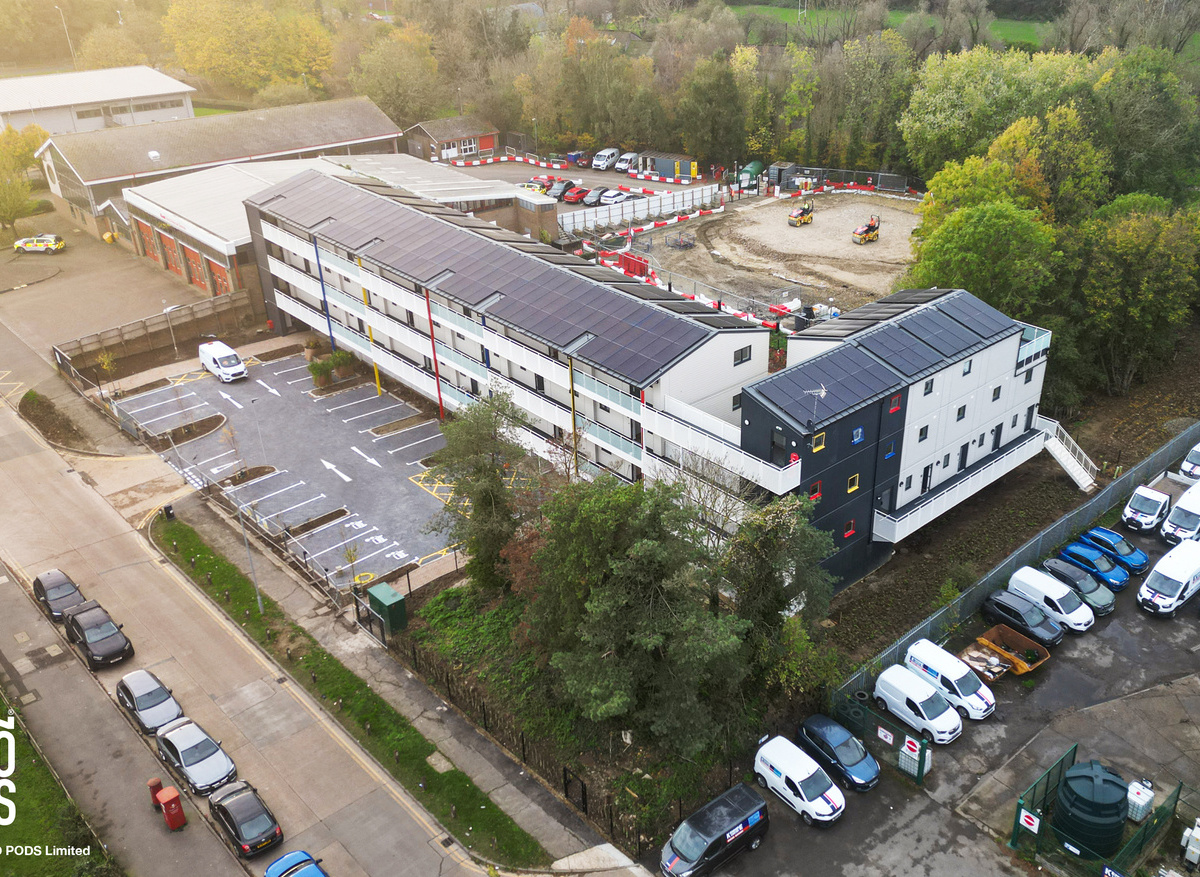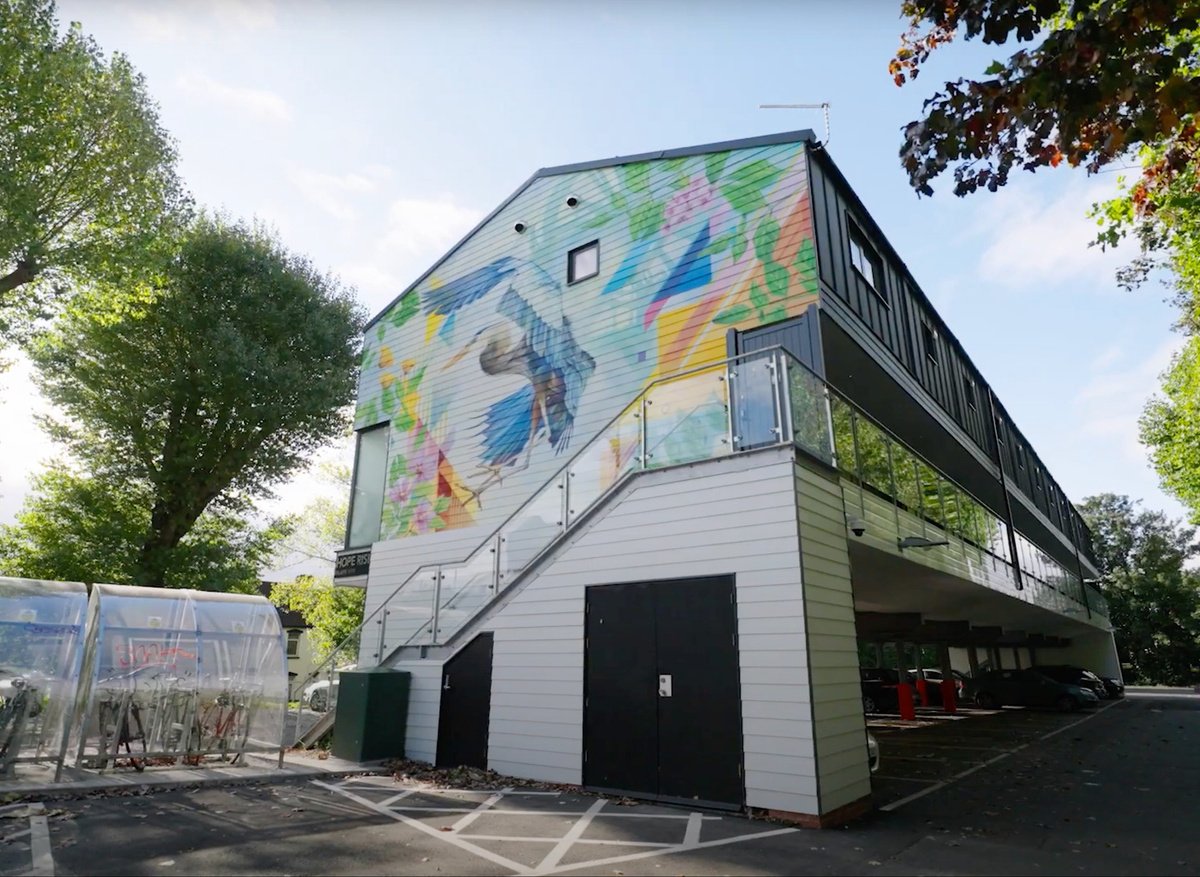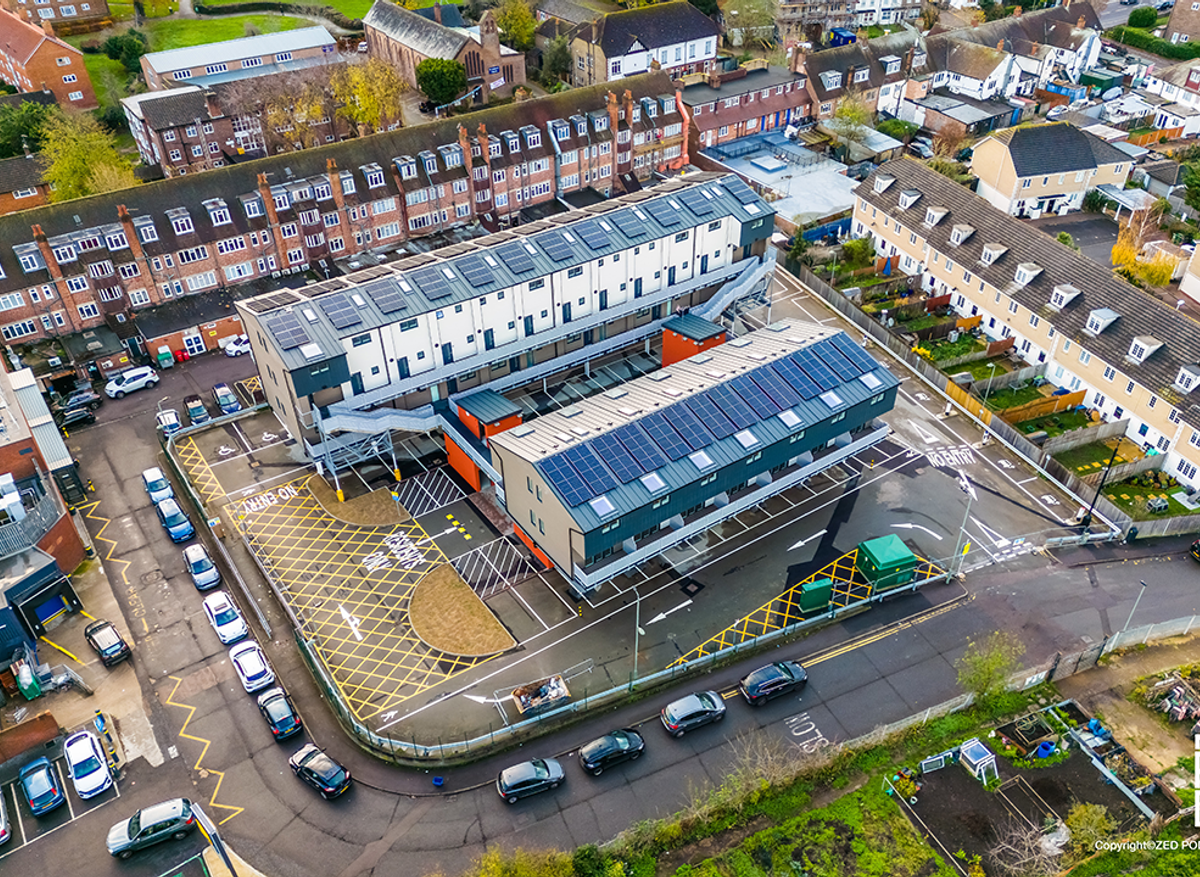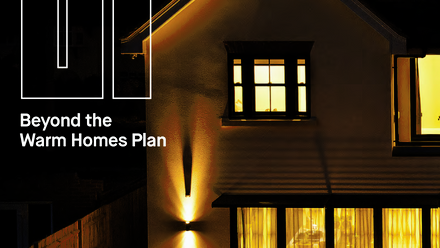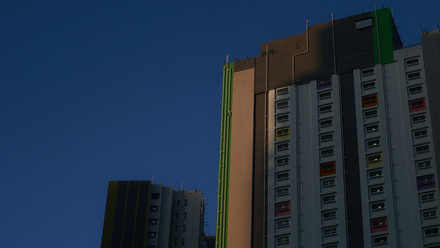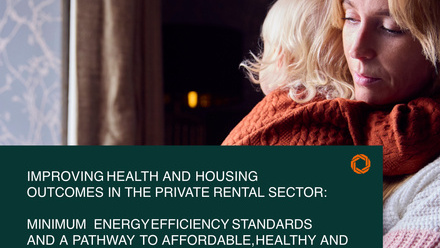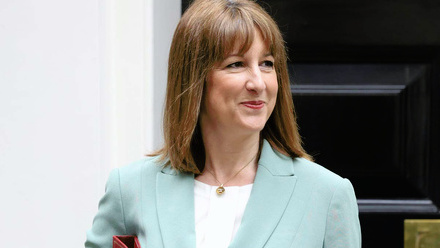Zero carbon social housing: unlocking brownfield potential
The UK's housing crisis demands innovative and immediate solutions, with thousands of people languishing on council housing waiting lists and growing numbers in temporary accommodation. Despite ambitious government targets of 370,000 new homes annually to build 1.5 million new homes over the next 5 years, delivery has consistently fallen short and the need for sustainable, scalable answers has never been more pressing.
As we seek sustainable solutions, expanding into greenfield land poses significant environmental, social, and logistical challenges. Instead, brownfield sites – already embedded within and closer to urban areas or infrastructure – present an opportunity to meet housing needs in a way that respects both the past and the future.
At ZED PODS, we believe unlocking the potential of these underutilised spaces can deliver the zero-carbon social housing the UK urgently needs. Through innovative design, careful planning, and modern construction methods, these overlooked sites can be transformed into vibrant, net zero communities, creating sustainable communities without compromising future generations.
In other words, brownfield sites are not problems to be solved but assets to be unlocked, offering the chance to build homes that are sustainable, beautiful, and deeply connected to place. Below, we explore seven key strategies essential for success.
1. Repurposing existing housing stock
Much of the UK's existing housing stock is outdated, inefficient, and unsuitable for modern living. Rather than extending cities outward, the strategic repurposing or redevelopment of underperforming stock can address housing needs sustainably, offering modern, space compliant and sustainable homes offering an opportunity to meet immediate needs while preserving urban cohesion.
Volumetric modular construction enables old or inefficient sites to be revitalised rapidly, reducing embodied carbon impacts while creating future-proof homes that meet evolving standards and expectations.
2. Building net zero social housing
Social housing must not only respond to today's needs but also anticipate tomorrow's challenges. Building to net zero carbon standards from the outset ensures homes are energy efficient, resilient to future regulations, and cost-effective over the long term.
Modern modular homes incorporate renewable energy systems, superior insulation, high-efficiency services, and passive design features to significantly exceed current regulatory requirements, creating homes that are both sustainable and desirable. Building to net zero standards ensures that future retrofitting is avoided, safeguarding financial and environmental investments over the long term.
This future-ready housing model is not just necessary, it is non-negotiable if we are to meet our net zero commitments by 2050.
3. Maximising brownfield potential within urban limits
Urban brownfield sites – from disused car parks to existing garages to flood plains to redundant industrial plots – offer the unique advantage of location: they are typically close to existing infrastructure, amenities, and public transport. The CPRE's State of Brownfield 2022 report identified over 23,000 brownfield opportunities across England alone, covering some 27,000 hectares.
Prioritising these sites ensures that development is compact, efficient, less car-dependent, bringing residents closer to workplaces, schools, healthcare, and public transport, supporting national efforts towards decarbonisation and urban regeneration and creating vibrant, walkable neighbourhoods.
4. Urban regeneration with double-edge benefits: housing delivery and green transformation
Unlocking brownfield land provides a rare double-edged benefit: meeting urgent social housing needs while regenerating neglected urban spaces into vibrant, biodiverse environments.
By transforming degraded or contaminated sites into thriving residential communities, developments not only address housing shortages but also turn 'waste' land into urban oases that enhance community wellbeing, biodiversity, and environmental resilience.
Incorporating features such as green roofs, rain gardens, naturalised landscapes, and ecological corridors, these projects deliver Biodiversity Net Gain (BNG) – a statutory requirement under the Environment Act 2021 – while simultaneously mitigating urban heat islands, improving air quality, and strengthening climate adaptation strategies.
Critically, such regeneration reduces site-wide whole life carbon impacts. Reusing existing land and infrastructure minimises embodied emissions; while integrating sustainable drainage systems (SuDS) and ecosystem services helps future-proof communities against environmental risks.
Far from being burdens, brownfield sites present an opportunity to create sustainable, resilient, and desirable places – turning liabilities into assets for generations to come.
5. Sensitive design within historic contexts
Brownfield sites are often located within or near conservation areas, historic centres, or sites of ecological interest. Development must, therefore, tread carefully, balancing the need for new homes with the imperative to respect local heritage and context.
Successful schemes emerge from early engagement with local stakeholders, thoughtful massing and materiality, and a deep appreciation of place. Our award-winning projects in conservation areas and floodplains have shown that, through sensitive designs, responsive massing, and considered materials, brownfield regeneration can enhance, rather than detract from, historic settings.
Unlocking brownfields is not simply a technical exercise, it is a civic responsibility.
6. Delivering complex brownfield projects
At ZED PODS, we have pioneered the delivery of modular, net zero social housing on some of the UK's most challenging brownfield sites. Our multi award winning schemes in Mid Devon, Bromley, Bristol, Newport, and Ashford exemplify how design, manufacturing know-how, and early stakeholder engagement can overcome issues like flood risks, contamination, made ground, buried services, conservation constraints, ecological sensitivities, and planning constraints must be navigated collaboratively.
Key success factors include integrated design and planning from the earliest stages, adaptability to local environmental and planning requirements, robust construction methodologies that incorporate modular flexibility, and close stakeholder engagement to resolve site-specific constraints.
These approaches allow developments to proceed efficiently, sustainably, and in ways that traditional methods may not permit.
7. Bridging standardisation and bespoke design
One size does not fit all, especially in the world of brownfield regeneration. Success depends on blending standardisation for manufacturing efficiency with bespoke design solutions tailored to each site's unique character. By embedding flexibility into modular systems – adjusting layouts, elevations, finishes, and material choices – it is possible to respond to local contexts without compromising efficiency or sustainability.
At its best, this hybrid approach allows developments not just to achieve planning approval more smoothly and deliver high-performance, low-carbon housing, but also to reflect local character and identity and create places where residents feel genuinely at home.
At ZED PODS, my 'Bespokularity' philosophy – the art of combining bespoke beauty with modularity – provides a framework for unlocking difficult sites in ways that are cost-effective, scalable, and community-focused.
In conclusion, brownfield sites hold immense untapped potential to help solve the UK's housing crisis sustainably. Through a design-led, net zero-focused approach, brownfield development can regenerate urban environments, provide high-quality affordable housing, and support broader environmental and social objectives.
ZED PODS' experience proves that the obstacles presented by brownfields are not barriers but opportunities – opportunities to build better, greener, and more inclusively. If we are serious about tackling the housing crisis, we must start where the land already welcomes us: within our towns and cities, on the forgotten plots waiting to be reborn.
By unlocking the potential of brownfields, we can deliver not just homes, but hope.

